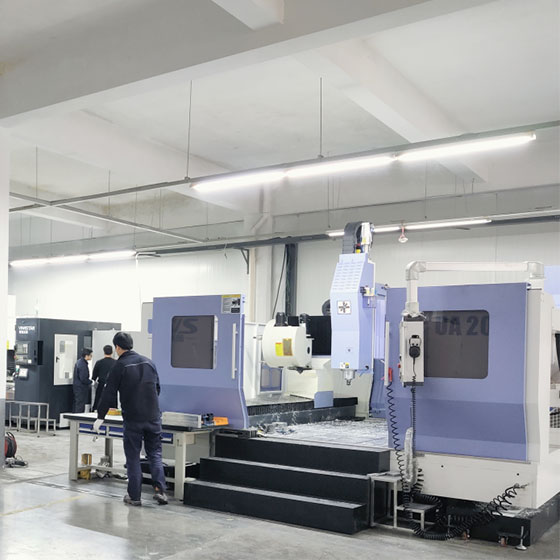FSW friction stir welding is an advanced technique for joining materials in a continuous operation. In friction stir welding, a cylindrical shouldered tool with a profiled probe is rotated and slowly inserted into two sheets butted together or the joint line between the sheets. Parts are clamped to prevent adjoining joints from being forced apart during welding. Frictional heat is generated between wear-resistant welding tools and the materials to be joined. This heat causes the latter to soften or melt and allows the tool to move along the joint line. Plasticized material is transferred from the leading edge to the trailing edge of the tool probe and forged through the intimate contact of the tool shoulders, creating a weld between the two pieces.
Potential advantages of friction stir welding over existing manufacturing welding techniques include: increased productivity, especially for thicker parts, possibility of continuous welding, ability to weld almost any thermoplastic, simple joint design, virtually flash-free welding, and it's a real-time automated process that improves quality and reduces welding failures.

FSW friction stir welding is a solid-state joining technique originally applied to aluminum alloys, but today it is widely used in many different industrial applications. The friction stir welding services has many advantages in terms of the mechanical properties of the welding materials and energy consumption, which directly leads to lower operating costs. Friction stir welding can be used to join multiple materials as well as different material combinations, also for a wide range of material thicknesses. As a solid-state welding process, it can be performed in a variety of welding geometries.
FSW friction stir welding is now an effective metal joining technique. Accoring to friction stir welding working principle, friction stir welding is often used in applications where traditional welding methods do not provide adequate mechanical properties or a cost-effective process. From publications over the past decade it is clear that friction stir welding of high melting point (HTM) materials such as steel, stainless steel, nickel-based alloys, etc. requires more complex FSW tool materials and processes than FSW aluminum control.
FSW friction stir welding is a revolutionary breakthrough in welding technology in the field of welding for nearly 30 years, which effectively solves the problems in the connection of aluminum new metal alloys materials and has obvious advantages. Compared with arc welding, the joint strength of friction stir welding can reach 80%-120% of the base metal, and the fatigue performance is 80%-95% of the base metal, with little or no deformation after welding, no porosity defects, and element burning problems with heat cracks or consumables.
Cheeven, as top of friction stir welding suppliers in China, provides FSW products and services. Feel free to contact us now!
New Energy Vehicle Magnesium Alloy Battery Tray Using Friction Stir Welding Technology
Why Use FSW Friction Stir Welding?